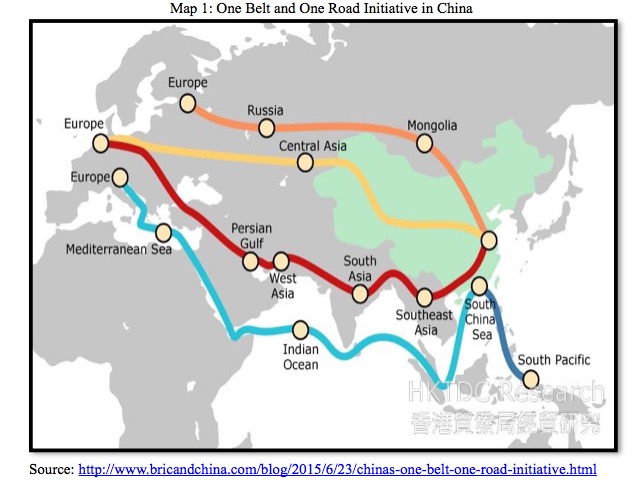One Belt And One Road Initiative Of China & Its Implications In Sri Lanka

By Mohamed Shareef Asees –December 29, 2016
One Belt and One Road (OBOR) initiative has become the centerpiece of China’s economic diplomacy in the recent years. The essence of OBOR is to promote regional and cross-continental connectivity between China and other developing countries. The ‘One Belt’ and ‘One Road’ refer to China’s proposed ‘Silk Road Economic Belt’ and ‘Maritime Silk Road’. Connectivity covers five major areas of interest: Policy coordination, infrastructure construction (including railways and highways), unimpeded trade, financial integration and people-to-people ties. Among these, infrastructure construction is the dominant feature of the New Silk Road. It is reported that the proposed OBOR has connected around 78 countries from East (Philippines) to West (Europe). The OBOR is not only benefit to China but also central to other developing countries where it connects all countries physically and make economic cooperation with them.
Although the OBOR has started in 2013, it has over 2000 years history. China’s imperial envoy Zhang Qian who was a Chinese diplomat who served as an imperial envoy to the world outside of China during the 2nd century helped to establish the Silk Road (A network of trade routes that linked China to Central Asia and the Arab world). The name came from one of China’s most important exports—silk. And the road itself influenced the development of the entire region for hundreds of years.
In 2013, China’s president, Xi Jinping, proposed establishing a modern equivalent, creating a network of railways, roads, pipelines, and utility grids that would link China and Central Asia, West Asia, South Asia and parts of South East Asia. This initiative, One Belt and One Road (OBOR aims to create the world’s largest platform for economic cooperation, including policy coordination, trade collaboration and social & cultural cooperation. OBOR can be a economic platform to create benefits for everyone.
The State Council authorized an OBOR action plan in 2015 with two main components: The Silk Road Economic Belt and the 21st Century Maritime Silk Road (exhibit). The Silk Road Economic Belt is envisioned as three routes connecting China to Europe (via Central Asia), the Persian Gulf, the Mediterranean (through West Asia), and the Indian Ocean (via South Asia). The 21st Century Maritime Silk Road is planned to create connections among regional waterways. More than 60 countries, with a combined GDP of $21 trillion, have expressed interest in participating in the OBOR action plan.
The effort has already made some practical achievements. China has signed bilateral cooperation agreements related to the project with Hungary, Mongolia, Russia, Tajikistan, and Turkey. A number of projects are under way, including a train connection between eastern China and Iran that may be expanded to Europe. There are also new rail links with Laos and Thailand and high-speed-rail projects in Indonesia. China’s Ningbo Shipping Exchange is collaborating with the Baltic Exchange on a container index of rates between China and the Middle East, the Mediterranean, and Europe. More than 200 enterprises have signed cooperation agreements for projects along OBOR’s routes. Following map shows the various economic routes of China.

The Initiative aims to consolidate and upgrade existing infrastructure and build new transport routes to improve cross-border trade. It also includes efforts to promote a greater financial integration with foreign countries and create a “Digital Silk Road” of international communication and information distribution. The “Silk Road Economic Belt” connects China via land with Central Asia, Russia, Europe and Southeast Asia. The “21st Century Maritime Silk Road” makes a link from the Indian Ocean, through the South China Sea to the South Pacific Ocean (see map). Geographically positioned in the middle of both the Belt and the Road, China has emerged as the facilitator in developing a connection between Europe and Asia. All roads lead to China; the Initiative has given major priority to infrastructure. Plans are already in place to build railway networks, port facilities, airports, highways and electronic communication networks to guarantee smoother and more efficient transportation of goods and people, from Southeast Asia to Western Europe.
